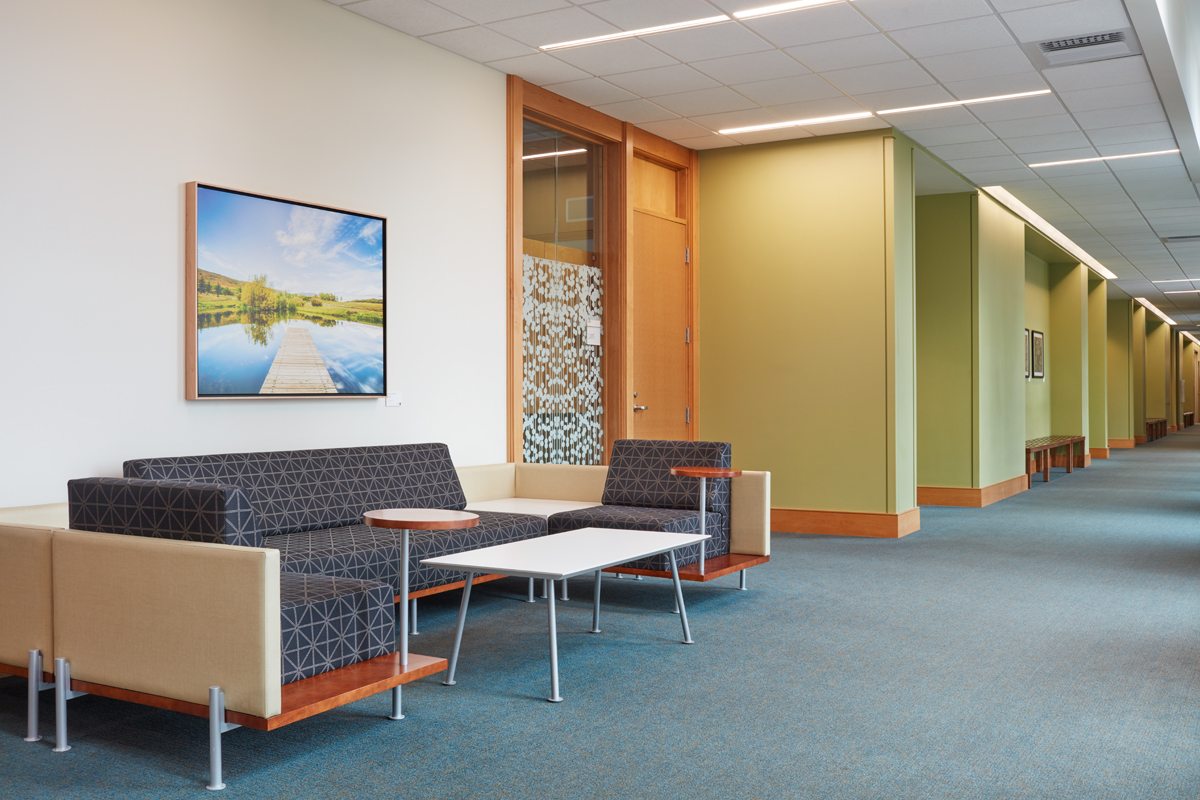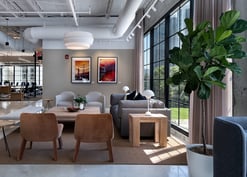Art shapes the way students experience and engage with their learning environments - especially in higher education. The aesthetic choices made in educational spaces contribute significantly to the overall atmosphere and influence the student experience, ultimately elevating productivity, academic achievement, and positively impacting student self-perception.
Enhancing Student Satisfaction and Campus Appeal
First impressions play a vital role on college campuses, where appearance significantly influences prospective students' university decisions. A study by Waite (2014) revealed that up to 80% of prospective students prioritize the visual appeal of a campus when making enrollment decisions. Further, research conducted by Knoll (2015) emphasizes a strong correlation between student satisfaction and their perception of facility aesthetics and spatial organization.
The influence of campus design directly impacts student attraction, subsequently affecting the overall student attrition rate. Studies underscore how campus design adds value and fosters a sense of community, requiring careful planning to establish a unique campus identity and address social and recreational needs (Griffith, 1994). Another study by McDonald et al. (2019), reveals that 67% of U.S. students consider the overall attractiveness of campus facilities essential.
The visual appeal of a campus serves as a crucial factor in shaping prospective and current students' perceptions of the institution, which goes hand in hand with the broader impact of campus design: the creation of a community, a distinct identity, and the fulfillment of diverse student needs. Incorporating diverse imagery and artwork into campus design can improve these perceptions, fostering a unique atmosphere that resonates with students..jpg?width=1500&height=1001&name=dtBv_067_DSC_2139_DaNil%20(2).jpg)
Classroom Design and Improved Academic Performance
Well-designed classrooms not only improve aesthetic appearance but also have the potential to improve academic performance. In fact, well-designed classrooms, in comparison to poorly designed ones, can contribute to the equivalent of a year of academic progress (University of Salford, 2014). Students self-report substantial improvements in various aspects when exposed to well-designed learning environments, including increased engagement (84%), enhanced grades (72%), greater motivation to attend class (72%), and heightened creative abilities (77%) (Steelcase, 2014).
Aesthetics and visual appeal play crucial roles in design, motivating students not only within classrooms but also in spaces like libraries. Here, the incorporation of attractive art and décor elements becomes essential, as they serve as significant motivators for students to consistently utilize the study environment (Journal of Learning Spaces, 2012). The addition of vibrant artwork in these spaces contributes to the creation of an inspiring atmosphere, fostering creativity and ultimately enriching the overall learning experience.
A holistic approach to creating effective learning environments, considering aesthetics and image, fosters a more productive and conducive atmosphere, ultimately contributing to the overall success of students.
Symbolic Classroom and Inclusive Learning
The significance of the symbolic classroom is underscored by psychology and education research, particularly focusing on elements like wall décor and displayed objects like artwork. These elements, when carefully chosen, directly impact learning outcomes in educational settings. Research highlights the transformative potential of small adjustments to the symbolic classroom, emphasizing their role in improving student outcomes and reducing achievement gaps (The Journal of Learning Spaces, 2016).
Moreover, these subtle changes contribute to enhanced inclusivity and representation within the educational environment. Diverse creative expressions in education architecture not only improve learning but also play a substantial role in shaping campus culture, creating a more inclusive and vibrant atmosphere (Times Higher Education, 2023). The incorporation of diverse artworks supports student identity, fostering a sense of belonging and cultural representation within the academic setting. This inclusive approach extends beyond the physical classroom space to wayfinding solutions, such as integrating art into maps and signs. Such strategies contribute significantly to a more inclusive navigation experience within the campus..jpg?width=1500&height=1022&name=_MG_8348%20(1).jpg)
How TurningArt Can Help
As a leading provider of innovative art services in higher education, TurningArt is positioned to play a pivotal role in the transformation of educational environments. Leveraging our expertise and dedication to the enhancement of academic spaces, we offer comprehensive art programs tailored to higher education institutions of all sizes. Our mission is to elevate the student and faculty experience, fostering inspiration, productivity, and an environment conducive to learning through art.
Working with an extensive catalog encompassing a full range of art types, including prints, originals, and commissioned pieces, our Art Advisors specialize in curating compelling art collections designed to meet the unique needs of any educational facility. We take pride in contributing to the creation of more humanistic and supportive learning spaces, promoting the overall well-being of students, faculty, and staff alike.
Connect with an Art Advisor to schedule a complimentary consultation or request a customized quote.

.jpg?width=332&height=177&name=_MG_0840%20copy%20(2).jpg)

.jpg?width=332&height=177&name=dtBv_067_DSC_2139_DaNil%20(2).jpg)



